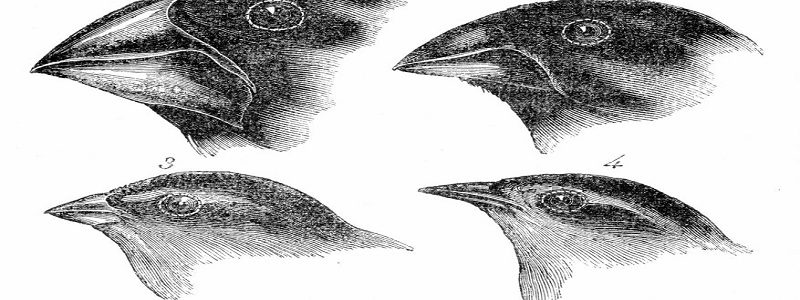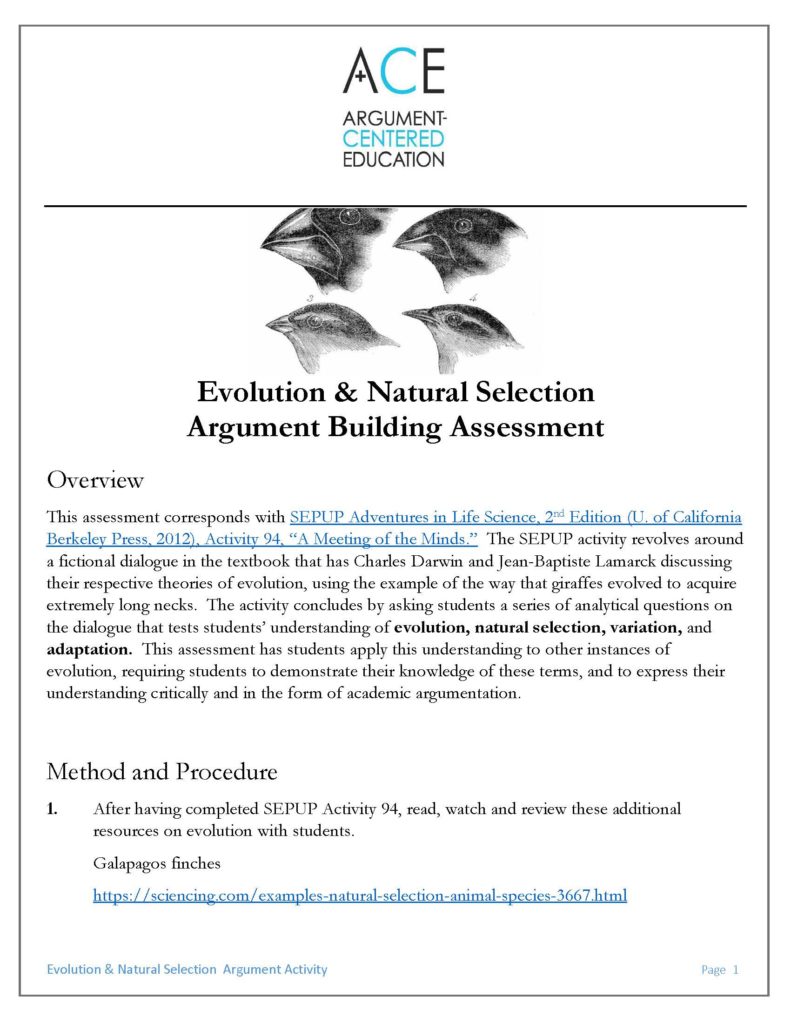
A SEPUP Natural Selection Activity Converted into Argument
Overview
This assessment corresponds with SEPUP Adventures in Life Science, 2nd Edition (U. of California Berkeley Press, 2012), Activity 94, “A Meeting of the Minds.” The SEPUP activity revolves around a fictional dialogue in the textbook that has Charles Darwin and Jean-Baptiste Lamarck discussing their respective theories of evolution, using the example of the way that giraffes evolved to acquire extremely long necks. The activity concludes by asking students a series of analytical questions on the dialogue that tests students’ understanding of evolution, natural selection, variation, and adaptation. This assessment has students apply this understanding to other instances of evolution, requiring students to demonstrate their knowledge of these terms, and to express their understanding critically and in the form of academic argumentation.
Method and Procedure
This assessment should take two 50-minute class periods to complete.
(1)
After having completed SEPUP Activity 94, read, watch and review these additional resources on evolution with students.
Galapagos finches
https://sciencing.com/examples-natural-selection-animal-species-3667.html
White and gray mice
Sea creatures
https://www.youtube.com/watch?v=S7EhExhXOPQ
Green and gray treefrogs
https://www3.beacon-center.org/blog/2012/10/01/evolution-101-natural-selection/
(2)
Check for student understanding of the ways that evolution took place with each of these species in nature.
(3)
Divide the class into four groups. Assign each group one of the species and sources listed above. Distribute an argument builder to each student.  ArgumentBuilder1Arg16.05.17
ArgumentBuilder1Arg16.05.17
(4)
Each student should individually build their own argument, answering the following question.
How do your species substantiate Darwin’s theory of evolution?
(5)
Students should be given these three guidelines, as they are building their arguments.
Guideline 1
Your claim should include a specific reason that your species substantiate evolution. You should not say, for example, “Green and gray treefrogs prove that Darwin’s theory of evolution is true.” This argumentative claim does not specify a reason that these species substantiate evolution.
Guideline 2
Your evidence should be as data-based and as factual as possible. Avoid rhetorical evidence. Scientists prefer quantitative support for their claims.
Guideline 3
Your argument must use the following four terms: evolution, natural selection, variation, and adaptation. The place that you have perhaps the best opportunity to use several of the terms is in the reasoning field.
(6)
Circulate and provide feedback to help students revise and improve their argument builders as students work.
(7)
When students have had time to complete their argument builders, match up each student with another student across species and sources (so, for instance, students who built arguments on green and gray treefrogs should not be matched together).
(8)
Students should read their partner’s argument builder. Then they should offer a critique to it, on the back of the argument builder (making sure that they write their name above the critique).
(9)
Critiques should address these questions:
Is the claim clear and focused on a single reason that these species substantiate Darwin’s theory of evolution?
Is the argument’s evidence quantitative, data-based, and objective?
Is the argument’s evidence properly sourced?
Is the argument’s evidence sufficient to make their claim convincing?
Does the argument’s reasoning clearly analyze why it is that the argument’s evidence supports its claim?
Is the reasoning thoughtful and analytic or does it merely repeat the evidence?
Are all four terms used appropriately?
(10)
Collect the argument builders and critiques and assess both on a single ACE assessment rubric.


